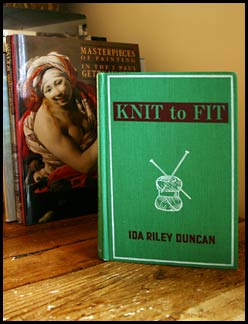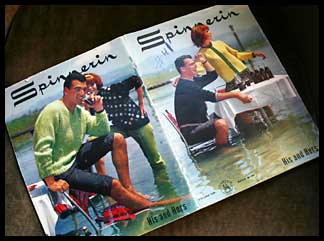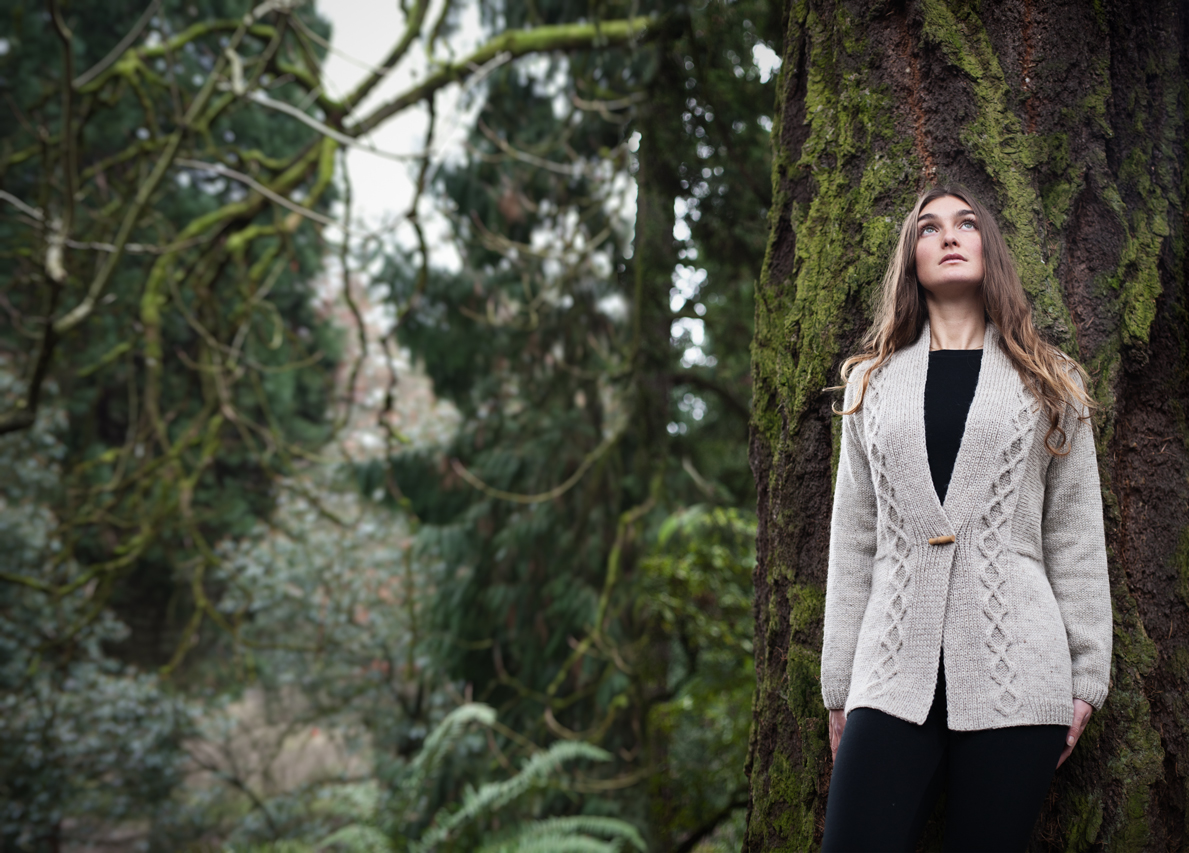
But of course, one of my favorite slacking activities is and will remain: Cruisin’ eBay!
The book above, KNIT TO FIT, is one of my best acquistions to date. It is by Ida Riley Duncan, who was a Professor of Home Economics @ Wayne State University in Detroit.
It cost $1.99 and is CHOCK FULL of some of the BEST information I’ve ever seen about designing knitwear.
This book was first published in 1963. Any of us with a passion for vintage knitting patterns will attest to the wonderful styles of the day.

This is my favorite vintage pattern book from 1963. Love that redheaded party girl – their table is IN THE WATER, and if they have to wear sweaters, I’ll bet there might be some RUM in that Classic Coke coolin’ in the drink! The guy is such a stud dork as well – smokin’ IN one shot and wearin’ a LIME GREEN MOHAIR sweater in the other! I’m in LOVE!!!
Amazing how Coca Cola was working it’s tail off even back then for those product placements in other companies’ advertising. WEIRD! I thought it was only in the movies…
Ahem, back to Ida Riley Duncan! What sets those wonderful designs from the 60’s apart from, hmmmm, let’s say the 80’s, is that they were designed to really flatter the body – THEY FIT!
In this book, Duncan writes, “KNIT TO FIT comprises the material… from my Progressive School of Knit Design, as well as other pertinent information.” HOORAY, Ida! A textbook for me to roam at will and find out these among other things:
Chapters on Diagramming and Charting the back of a cardigan to the armhole – Duncan walks you through the entire design process
Shaping of the Armhole, or ARMSCYE!
How to Shape Shoulders
Necklines
Fronts of Sweaters: Bands, Zippers, Pockets – both positions and type!
Sweaters and Blouses Using Lace Stitches
I’M OUTTA CONTROL HERE: there’s even a chapter on Operating a Knit Shop!
This is a university level textbook! And I’m it’s favorite student from today on…
Ida SPEAKS: “Just as in the construction of a beautiful piece of architecture, there are principles which may be followed for correct shaping. Simple diagrams are all that are needed. The Stitch Gauge (Chap. 4) and How to Take Measurements for Knits (Chap. 3) are very important. Once these are understood, there’ll be no cupping of skirts or too-tight garments across the bust, and you will realize that with correct styling, anyone can wear and be very smart in a knit.”

